Ghana’s agriculture sector is a vital component of
its economy. It is predominantly characterised by subsistence farming with a notable focus on the crop
subsector. Cocoa is among the most important earners of the Ghanaian economy and the sector has, overall, been the biggest employer in the economy since independence.
The agriculture sector is dominated by food crop production for local con- sumption as well as export. Ghana ranks as the fourth-largest cassava pro- ducer globally, with an impressive out- put of 22 million tonnes in 2020. This root crop holds immense agricultural significance, occupying approximately 1 million hectares of farmland and engaging around 70 percent of farm- ers nationwide. The country is also the world’s second-largest producer of yam with a production volume of 8.5 million tonnes in 2020. The country cultivates various yam varieties, including the renowned pona variety, which is cher- ished for its unique taste and quality.
In addition to cassava and yam, Ghana boasts substantial production levels of plantain, maize, rice paddy, oil palm, oranges, pineapples, groundnuts, and coconuts, contributing to the nation’s agricultural diversity and food security. Despite its robust agricultural output, Ghana faces challenges meeting domestic demand, leading to significant food crop importation. More than a million tonnes of rice are imported an- nually, along with substantial amounts of wheat, soybeans, shea nut and malt imports as well as fruits and vegetables brought in to meet local demand.
Ghana has produced cocoa since 1879 when Tetteh Quashie introduced Amelonada cocoa beans from Fernando Po (now Equatorial Guinea). The coun- try’s favourable climate, characterised by adequate rainfall, sunshine, humidity, and conducive temperatures, provides an ideal environment for cocoa tree cultivation and it is currently the second -largest producer of the cash crop.
1n 2019, the government launched the Rearing for Food and Jobs module of the Planting for Food and Jobs initia- tive. This has led to notable produc- tion increases across various livestock categories. Despite this growth, Ghana continues to heavily rely on meat im- ports, particularly chicken. Chicken imports constitute a significant portion, with import volumes far exceeding local production. Ghana also imports cattle offal, beef and veal to supplement local cattle production.
Ghana boasts approximately 8 million hectares of forested land, with the ma- jority, about 7.7 million hectares, com- prising primary forests that naturally re- generate. Additionally, there are around 290,000 hectares of planted forests.
In terms of timber exports, there was a modest increase in the export of pri- mary timber products (billets) from 24,734m3 in 2019 to 25,890m3 in 2020, reflecting a growth rate of 4.7 percent. However, the export of timber billets ex- perienced a significant surge, recording a 40 percent growth over the total ex- ports recorded in 2020. This substantial growth in 2021 is attributed to the pre- Christmas and New Year holiday stock build-up by international buyers.
The increase in export quantity has had
a positive impact on foreign exchange earnings. Between 2019 and September 2021, export revenue surged from US$ 7.5 million to US$ 13.4 million, reflect- ing the growing importance of the tim- ber sector to Ghana’s economy. This up- ward trend underscores the significant contribution of timber exports to the country’s foreign exchange reserves and overall economic development.
Fish accounts for about 60 percent of the nation’s protein needs, with marine fish- ing being a primary source. However, there has been a decline in fish pro- duction from both marine and inland sources, mainly due to uncontrolled artisanal practices. To address this, there has been a focus on aquaculture, which has seen growth since 2018. However, Ghana continues to face a deficit in fish production.
To enhance agricultural productivity and reduce dependency on rainfall, the government initiated the One Village One Dam policy in 2017, aimed at fa- cilitating year-round farming across the country. Efforts are underway to further improve dam infrastructure by reinforc- ing the upstream slopes for increased longevity and safety. Substantial invest- ments have also been directed towards rehabilitating and modernising major irrigation schemes such as the Tono and Kpong Irrigation Schemes, as well as the Kpong Left Bank Irrigation Project (KLBIP), which is projected to provide irrigation coverage for approximately 2,100 hectares, further expanding agri- cultural opportunities in the region.
The lack of storage facilities has led to consistent post-harvest losses in Ghana. To address this, the government estab- lished Ghana Airport Cargo Centre at Kotoka International Airport in 2016 and has completed 42 out of planned 50 prefabricated grain warehouses, each capable of holding 1,000 metric tonnes. Under its One District One Warehouse policy, additional ware- houses are being built around the coun- try. Private warehouses, licenced by the Ghana Grains Council, have also added 54,600 metric tonnes of capacity for ag- ricultural products.
In 2018, the Ghana Commodity Ex- change was established to facilitate link- ages between producers of agricultural commodities and buyers. The GCX operates through segregated trading and warehousing storage operations, utilising an electronic warehouse receipt system backed by collateral manage- ment services. Commodities traded on the exchange include maize, soybean, sorghum, sesame, and rice.
Between 2020 and 2050, Ghana’s population is expected to experience a compound annual growth rate (CAGR) of about 1.7 percent. This growth, combined with a rising middle class, is anticipated to drive an increase in demand for food. Urbanisation in Ghana is expected to rise significantly, with the urban population projected to reach 52 million by 2050, up from 31 million in 2020. In addition, there is expected to be a substantial rise in average household personal disposable income. This eco- nomic advancement will likely result in greater consumer spending on food and other goods and services, further boost- ing food demand in the country.
SECTOR OPPORTUNITIES
• Advancement in the development of climate-resistant seeds and adaptable technology.
• Manufacturing of machinery tai- lored for the production of poultry and fish feed.
• Scaling up shea butter processing capacity to accommodate increasing production and meet rising demand.
• Implementation of modern tech- nology in aquaculture to reduce costs and increase output.
• Expansion of rice production and processing to meet growing local de- mand, supported by targeted incentives. • Investment in cocoa processing factories in Ghana to capitalise on the availability of cocoa beans, allowing for value addition and export of processed cocoa products.
INVESTMENT INCENTIVES
• Ghana has a youthful population, about 67 percent of the labour force are between 15 and 64 years old.
• The food and agriculture industry offers several incentives for companies and ready-to-go investors including a 5–10-year tax holiday for companies in the agriculture sector; concessionary corporate income tax rates; option to carry forward losses for up to five years. • The Model Lease Agreement (MLA), drafted by the Ministry of Food and Agriculture, helps to protect the in- terest of large-scale farmers.
• Under the Export Marketing and Quality Awareness Project, significant investments have been made to boos access to farming communities through improvements to road and transport in- frastructure.
• There has been a significant im- provement in warehousing capacity at the airport and in public and private fa- cilities around the country.
In the longer term, to mitigate the impact of inflation on food security, policymakers must en- able farmers to adjust to global demand and take advantage of market opportunities. This is particularly relevant since many of the poor are farming households. Policies should be evidence based and aimed at alleviating the different constraints farmers face. Policy actions may include the channelling of investments in agriculture to research, development, and technology trans- fers to help increase productivity and reduce production costs, as well as improve the quality and safety of food.
Additionally, as the effects of climate change become more salient, it is also essential that the government invests in climate smart agriculture initiatives which can help farmers adapt to changing weather patterns. Promoting sustainable agriculture, which is resilient to climate change, can help farmers withstand future shocks. With the scope of further promoting agri- cultural production and rural livelihoods, improved access to credit and crop insurance should be explored in order to allow farming households to invest and take risks to expand their busi- nesses and increase their competitiveness.
Additionally, farming households benefit from diversified income sources, which can help them better cope with shocks. Income diversification, however, requires being able to access markets where opportunities to supply labour and goods are available, something that is not always the case in rural areas. Thus, the government should develop infrastructure in rural areas such as better roads, irrigation channels, and improved primary education. These investments can help farmers grow more profitable crops and use better seeds that produce more harvest. Better education and connectivity can also help people find jobs that are not related to farming, which can improve rural livelihoods.
In addition to supporting higher domestic food production, policies need to target opening the country to more effective integration with global food supply chains. Programmes may seek to foster regional and global trade to improve the availability and affordability of food by reduc- ing barriers to trade, promoting regional integration, and increasing market transparency. Also, policies that seek to reduce market distortions such as subsidies, taxes, and price controls can improve market efficiency and reduce food waste. The Ghana Food Systems Resilience Program can contribute to supporting the objectives of building economic and climate resilience, in- creasing food production, and reducing food insecurity. The programme is also intended to support some of the objectives of the government’s flagship Planting for Food and Jobs (PFJ) through provision of critical inputs like fertilisers that are currently at unaffordable levels. The Ghana Tree Crops Diversification Project can serve as a critical puzzle piece of the country’s cur- rent challenges. The project would support poverty alleviation while setting the country up to generate more foreign revenues in the medium to long term.
Source: 7th Ghana Economic Update. Price Surge: Unravelling Inflation’s Toll on
Poverty and Food Security. Produced by the World Bank Group. https://documents1.worldbank.org/curated/en/099072023055014341/pdf/P177994046644e0e20b3dd057c81347c0ef. pdf


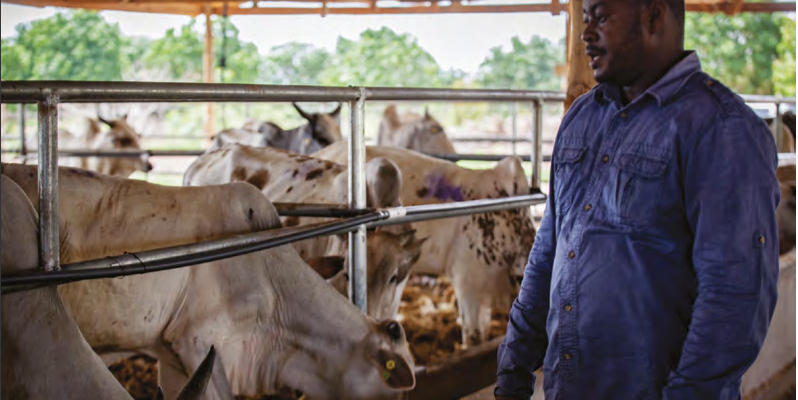
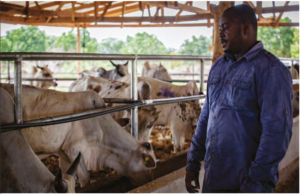
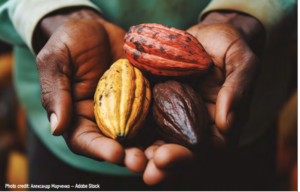
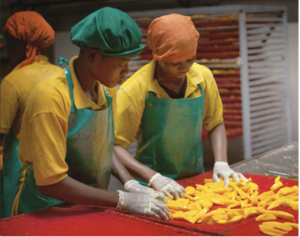
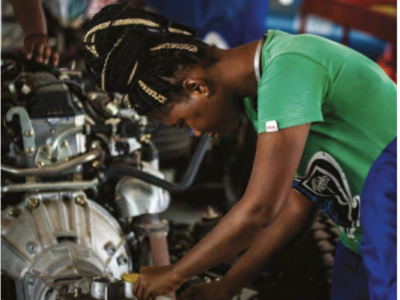




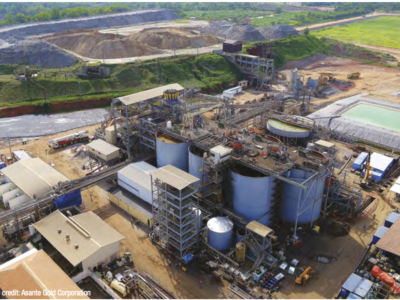



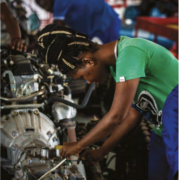
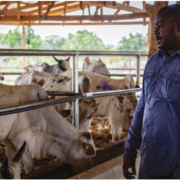
Comments